INNER VALUES
„INNER VALUES“ arose out of the fact that the prices for animal products are constantly declining due to livestock farming and highly industrial slaughter methods. While just some decades ago farm animals where highly valued and mostly all of their resources were further processed, today only the most tasty and easiest to prepare parts of an animal are actually used. In present times less then half of an animal is really further processed in Germany. All the rest goes to „animal rendering plants“ and thus more or less directly to the garbage can.
Since we never get in contact with the slaughter process of our food, we started to be disgusted with the „by-products“ of animals. Offals are more and more considered repellent and inferior in our society. Basically, animals degraded to cheap filet-resources, being killed for nothing more than some cutlets and schnitzels.
With this in mind, Tobias Trübenbacher started asking questions about the whole issue of animal resource wastage in general. Are such slaughter by-products really nothing more than waste? Is our rejective attitude towards these materials justified and legitimate? Or shouldn’t we, if we really need to kill an animal, at least appreciate all of its resources instead?
The student tried to find answers to the question of whether or not we can overcome stereotypical aesthetics; whether we can appreciate supposedly repellent materials. He wanted to find out if it is possible to change ones habitual perception.
Trübenbachers approach to these questions takes the form of two seatings out of tanned and further processed cattle intestines and pigs’ bladders.
The chairs aestheticize, revaluate and uncover the true value of these inner skins by inviting the recipient to permit immediate contact between body and material. Thereby the former repulsive, negatively connoted appeal of the previous waste products is being replaced by opposite values. The materials are advancing to become something beautiful, inviting and supple, which people like to explore and to be close to.
MAKING PROCESS:
INNER VALUES started with various material studies in order to explore inner animal skins, to understand their characteristics and qualities and to try out different possibilities to conserve them with both traditional and new tanning processes.
Based on the findings of these first trials the student decided to use tanned pigs’ bladders and cattle intestines, which are both waste materials, usually thrown away after slaughter.
Therefore, at first, the bladders were thoroughly cleaned with vinegar solution and freed of fat or meat remnants. After washing the purified materials in clear water they were tanned for several weeks in potassium aluminium sulfate. During this process the skins, which mainly consist of proteins, contract, their protein fibers solidify and merge together. Next, the skins were regressed by massaging a mixture of train oil, Vaseline, curd soap and tallow in the material. Afterwards the bladders were constantly kneaded, stretched and tumbled for many hours. Thereby the in this stage still stiff, brittle and wrinkled bladders become increasingly whiter, softer, more flexible and leathery. The resulting bladder-leather was then stuffed with recycled bandaging materials and sewn shut.
The cattle intestines were firstly processed quite similar. They were also cleaned, tanned and greased in the beginning. One significant difference laid in using chromium sulphate as tanning agent which effected a partially silver-blue colouration. After washing off the chemicals and kneading the intestines for some time, the leather was carefully blown up to fully inflated tubes and twisted around the seat frame.


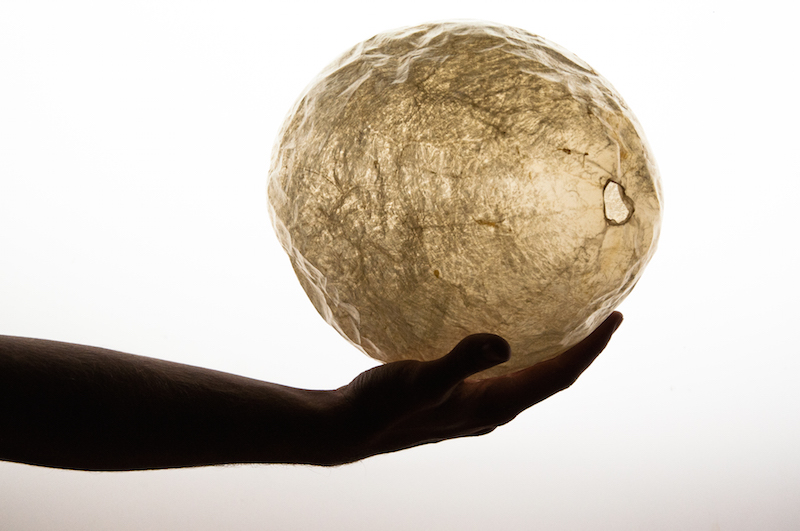





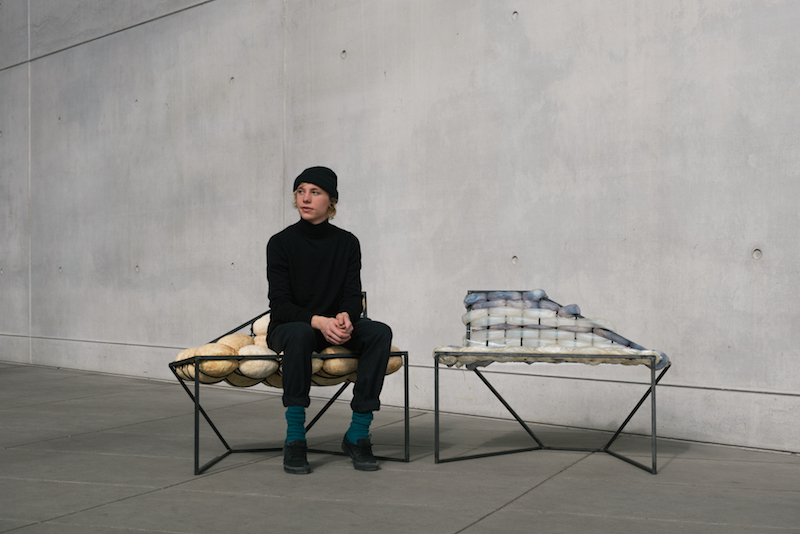
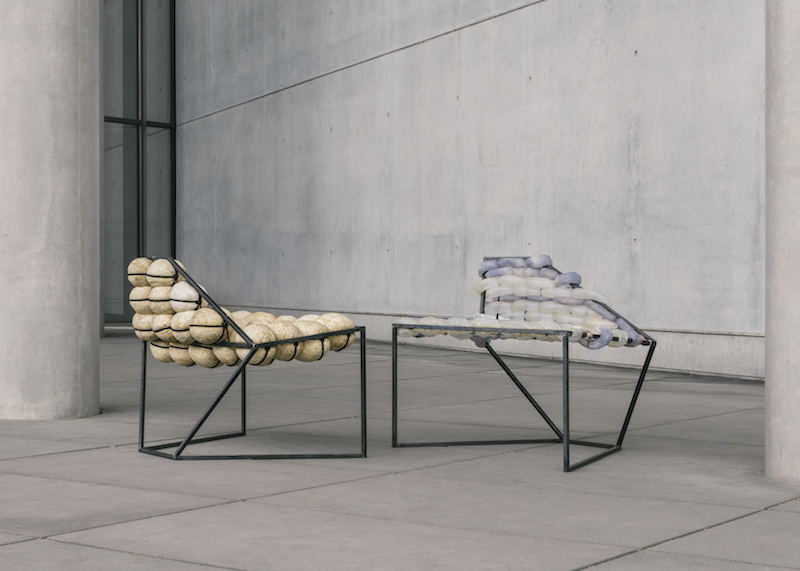
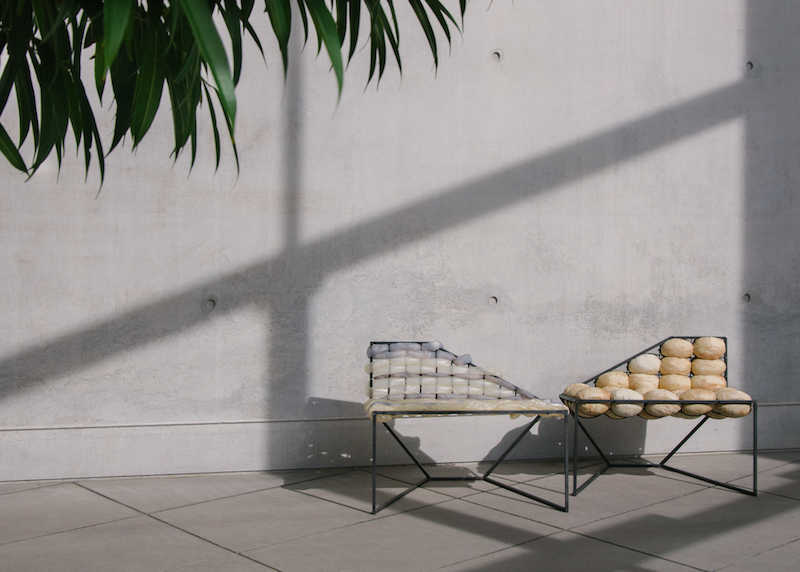

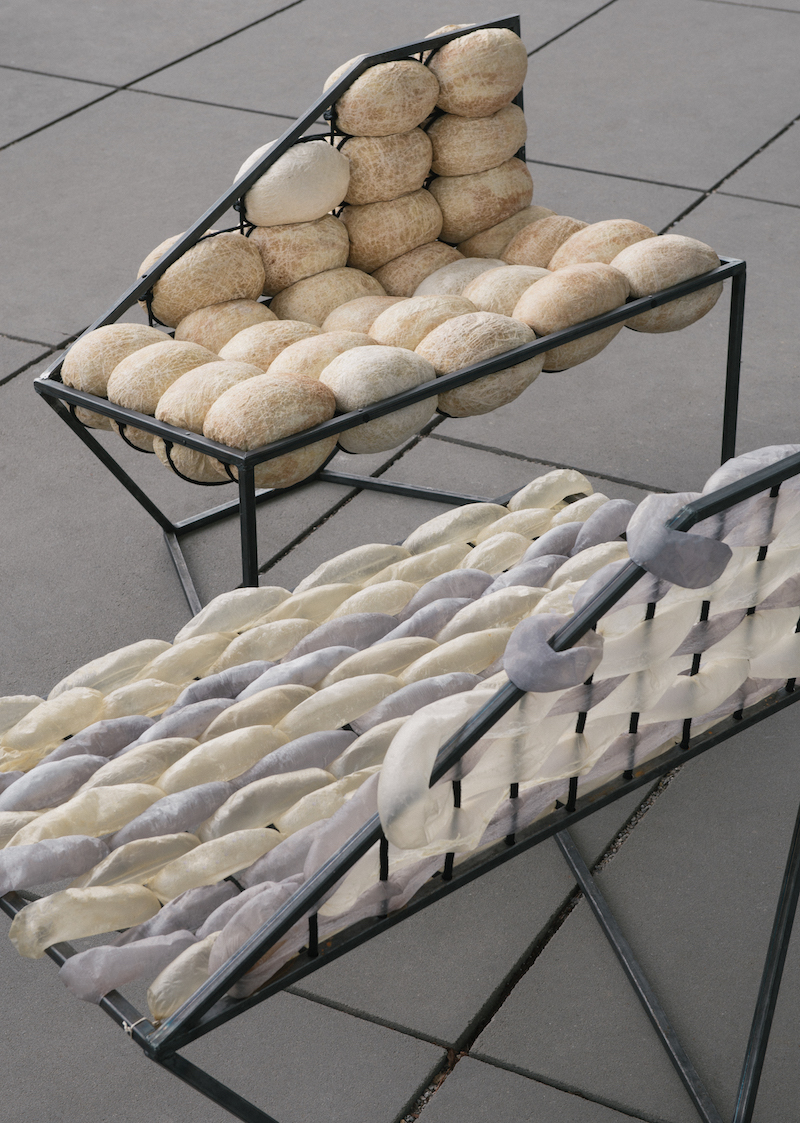

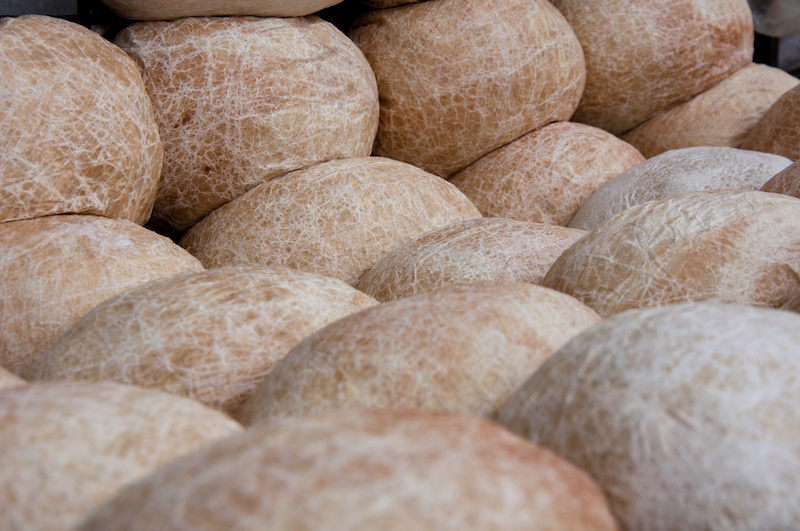
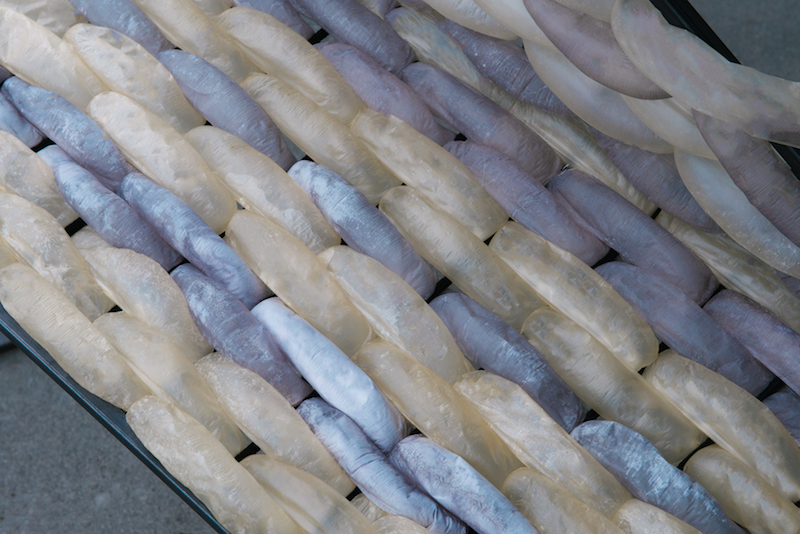






















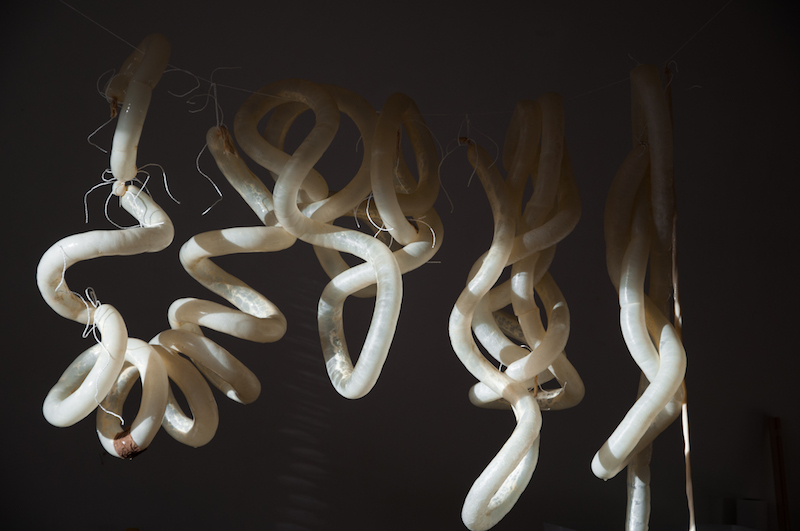
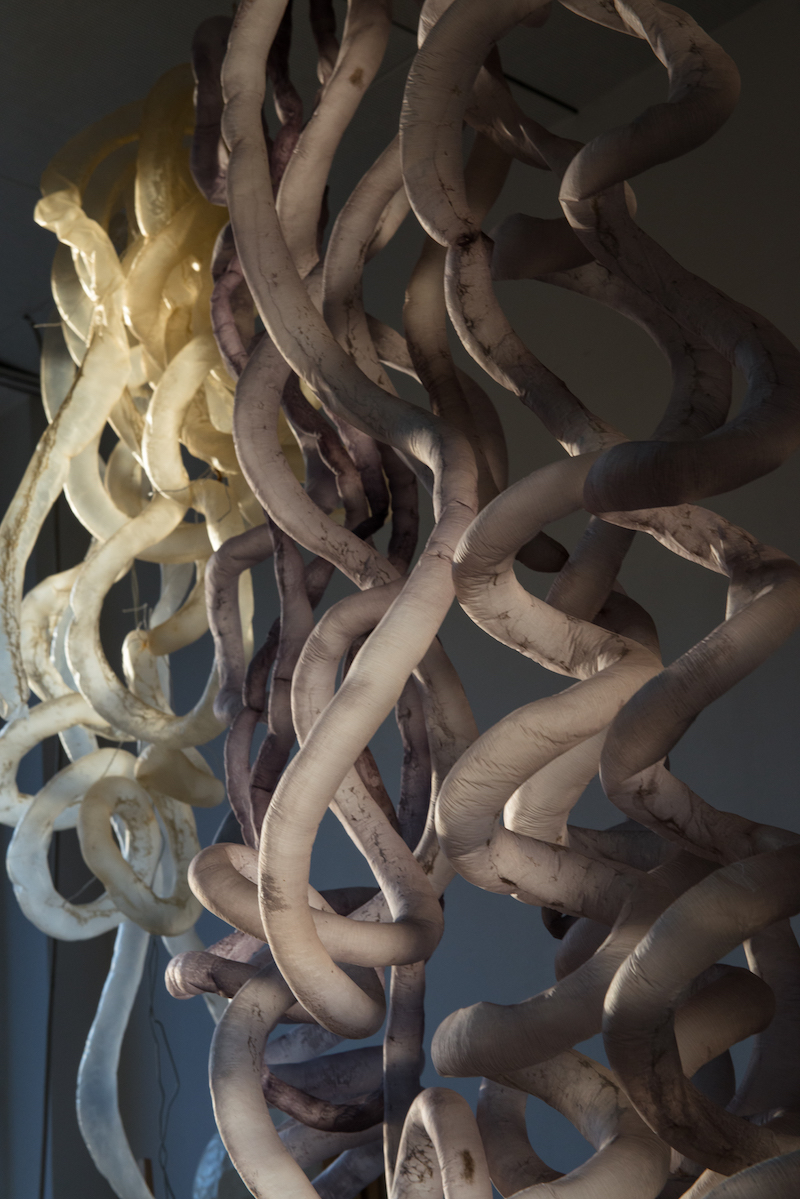
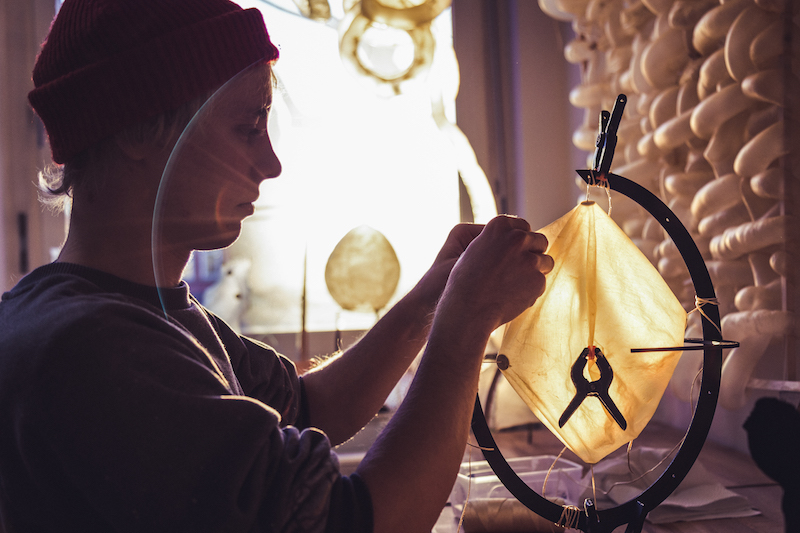
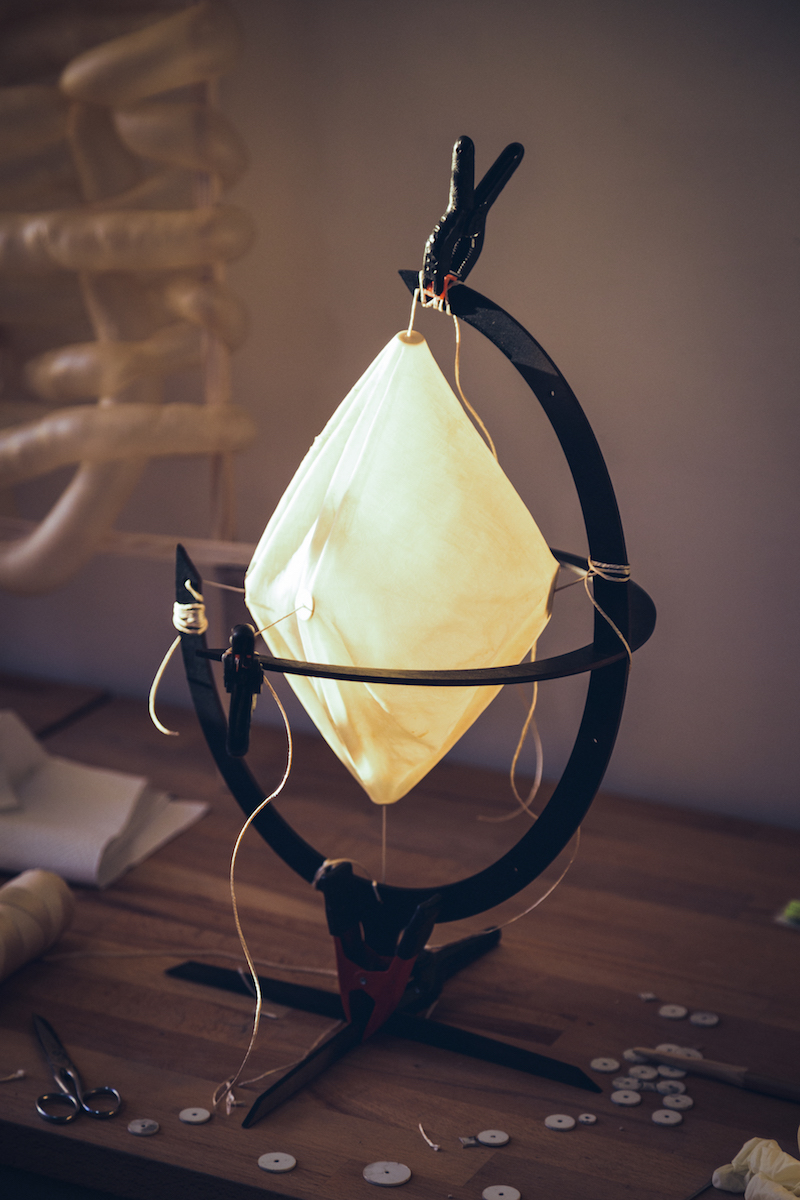

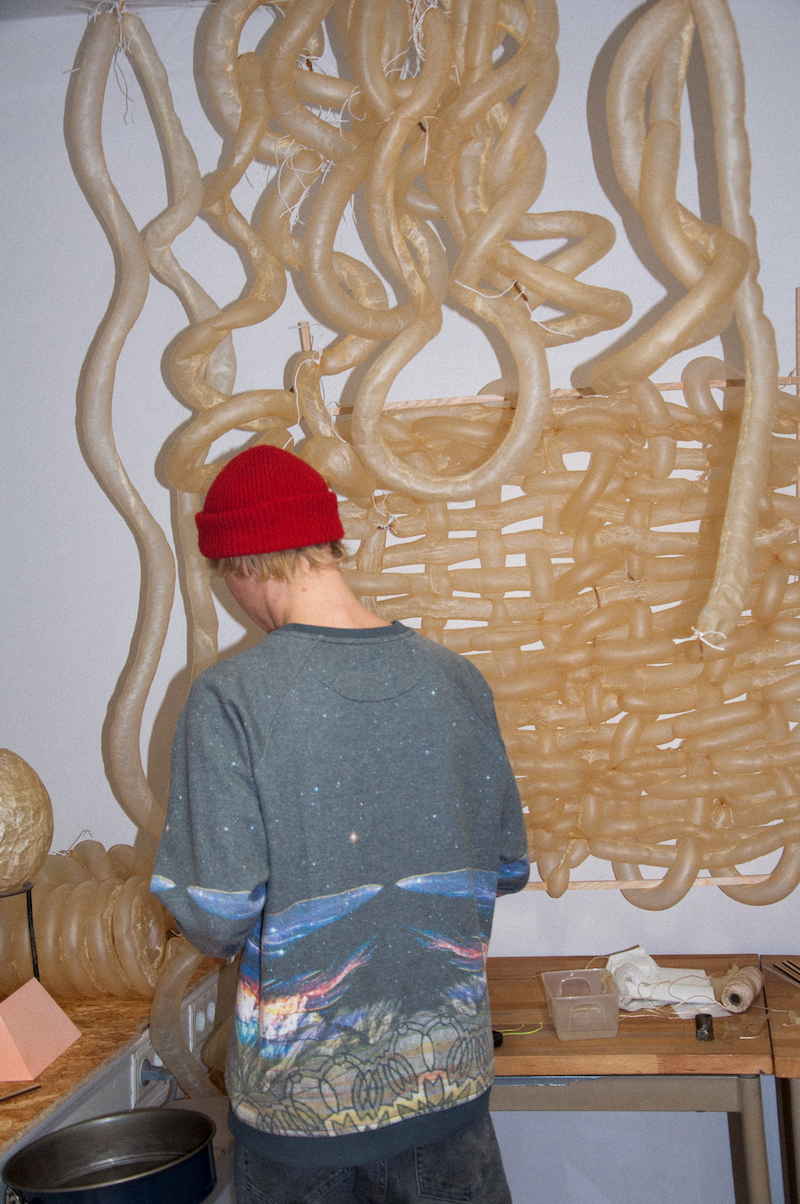




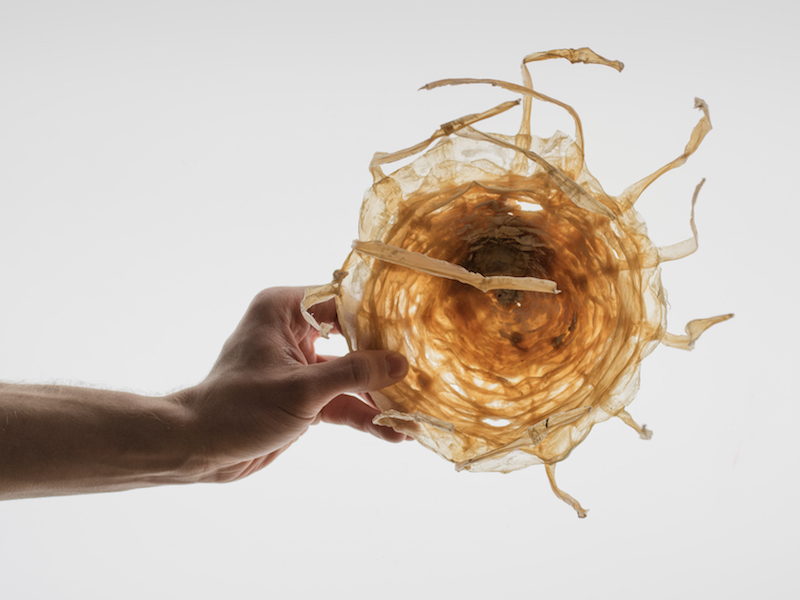
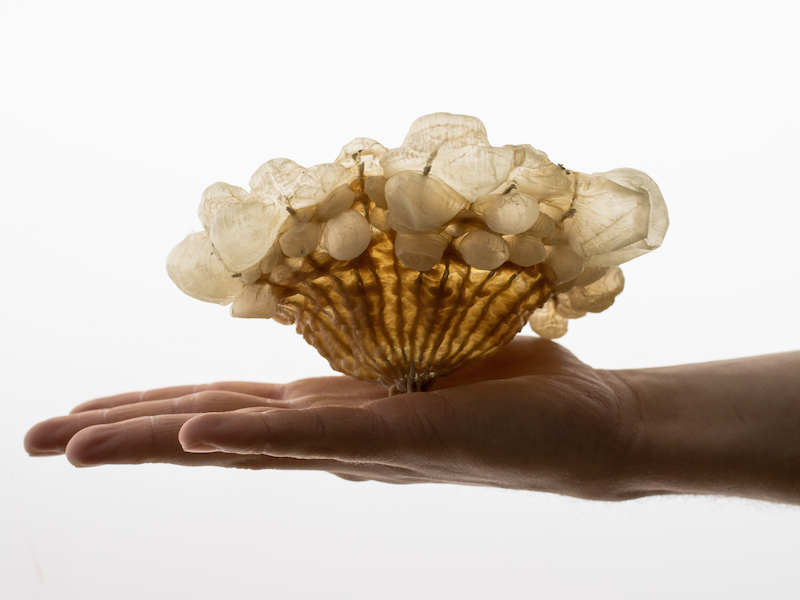
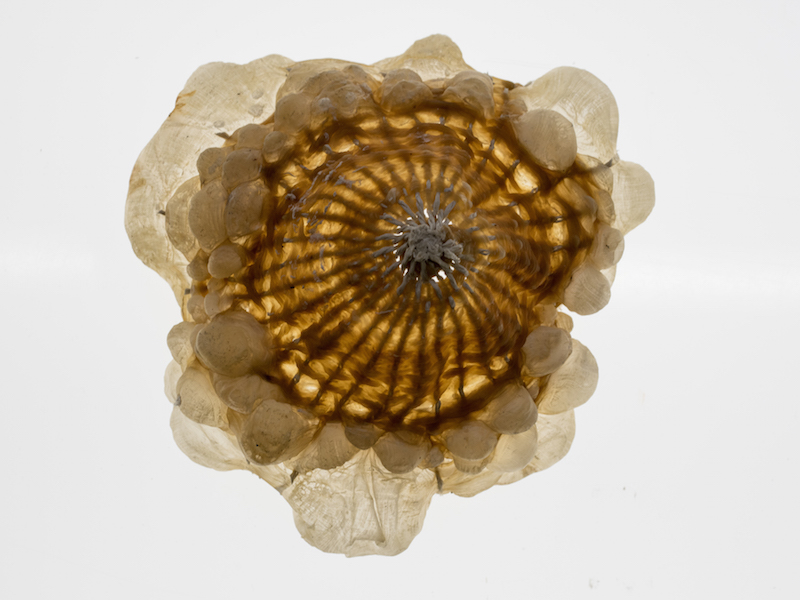
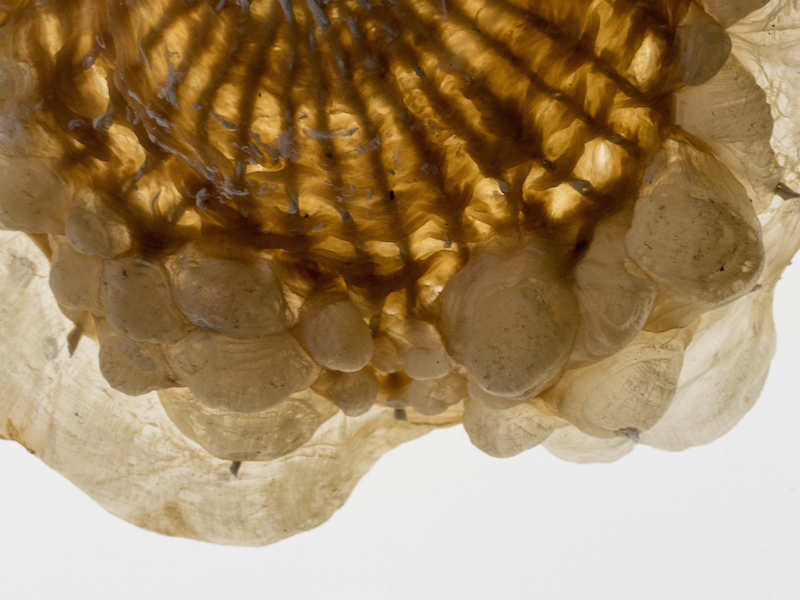


Lieber Tobias Trübenbacher,
hiermit möchte ich dich informieren, dass wir deinen Stuhl aus Schweinsblasen in der aktuellen Ausgabe unseres Schweizer Magazins “Wohnrevue” vorstellen.
Falls du ein PDF davon möchtest, bräuchten wir deine Email-Adresse, damit wir es dir schicken können.
Herzliche Grüsse,
Susanne Lieber
__________________________
WOHNREVUE
Susanne Lieber, Dipl.-Ing. Innenarchitektur
Chefredakteurin
NZZ Fachmedien AG
Stationsstrasse 49 · CH-8902 Urdorf
Zentrale +41 44 735 80 00 · Direkt +41 44 735 80 04
susanne.lieber@wohnrevue.ch · http://www.wohnrevue.ch